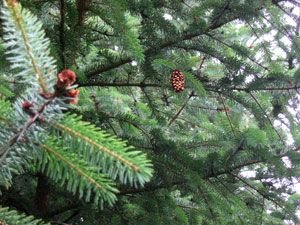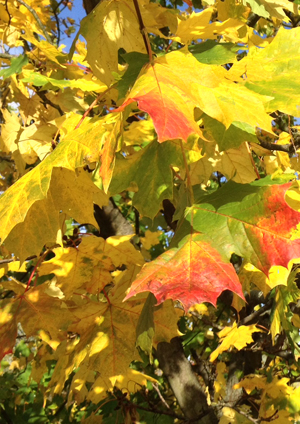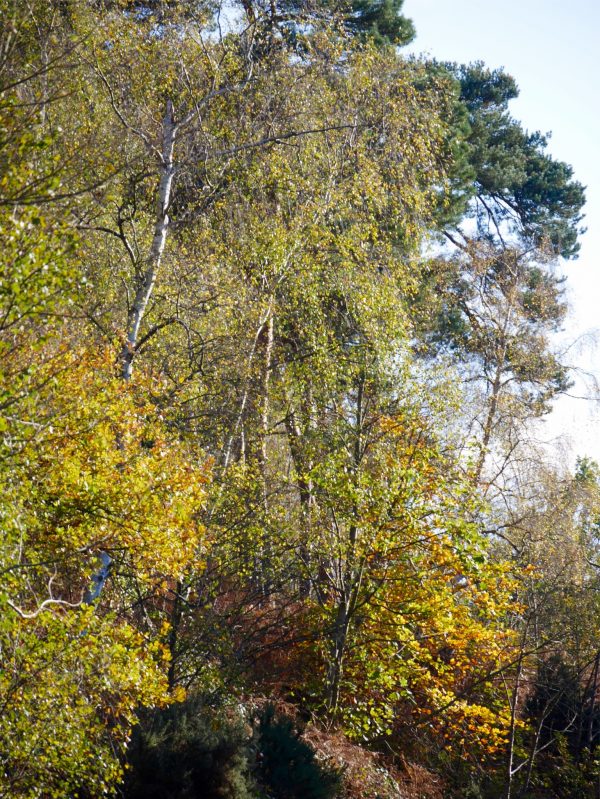Plant pigments – the xanthophylls

The chlorophylls (and there are several different types) are the main light absorbing pigments in land plants. They are located in the chloroplasts of the palisade and spongy mesophyll layers of the leaves. The chlorophylls mainly absorb red and blue wavelengths of light. Apart from the chlorophylls, plants have other pigments - often termed the accessory pigments - notably the carotenes and the xanthophylls.
Carotenes are hydrocarbons - made up of carbon and hydrogen and they contribute to photosynthesis by transmitting the light energy they absorb to chlorophyll. They also protect plant tissues by helping to absorb energy from an ‘excited form’ of the oxygen molecule [O2 ], which is formed during photosynthesis.  The carotenes are also responsible for the orange (but not all of the yellow) colours in autumnal leaves and dry foliage; and for the colours of many other fruits, vegetables and fungi (for example, cantaloupe melon, sweet potatoes, and chanterelle).
The carotenes are also responsible for the orange (but not all of the yellow) colours in autumnal leaves and dry foliage; and for the colours of many other fruits, vegetables and fungi (for example, cantaloupe melon, sweet potatoes, and chanterelle).
The xanthophylls are yellow pigments. Their molecular structure is similar to that of the carotenes. Xanthophylls have some oxygen as well in their structure. The xanthophylls, e.g. violaxanthin and zeaxanthin, can pass this light energy between themselves and convert some of this light energy into heat energy, This can be used to prevent damage to the light harvesting complexes in the chloroplasts. This process is known as the xanthophyll cycle.
Evergreen conifers, like pine and spruce, face a problem in winter - they have leaves ! But it is too cold to fix carbon through photosynthesis, but their chlorophyll molecules are still absorbing light energy. It is vital that they have a mechanism to dissipate this absorbed light. This is where the accessory photosynthetic pigments - the xanthophylls are important. The operation of the xanthophyll cycle allows the plants to cope with the absorbed light in the winter months, protecting the light absorbing complexes and allowing the plants to recover from the winter conditions and begin the process of photosynthesis, as and when the temperatures allow.

Comments are closed for this post.
